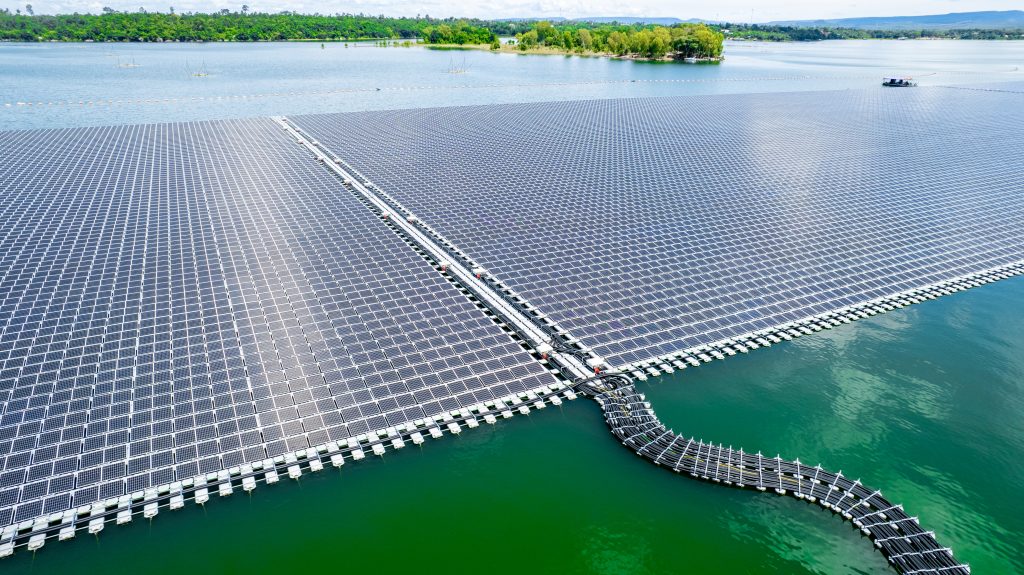
The hydro-floating solar hybrid project at Sirindhorn Dam in Thailand. (Photo: EGAT)
Floating solar PV capacity is expected to play a key role in fulfilling Southeast Asia’s overall solar expansion, with countries like the Philippines, Indonesia, and Thailand well positioned to use their unique geographies to support the technology.
This is the according to a new analysis from energy research firm, Rystad Energy, which predicts that Southeast Asia will account for 10% of the broader Asia region’s total solar capacity by 2030, including ground-mounted, rooftop, and floating.
Unlike the rest of Asia, where land for ground-mounted solar projects is more frequently available, available land in Southeast Asia is generally set aside for agricultural purposes, leading solar developers to look offshore for potential locations. Nine of the world’s top ten biggest floating solar projects are located in either Taiwan or China.
Many more projects, however, are being proposed for the region, building on the example of the 145 MW Cirata floating solar PV project in West Java, Indonesia which began operation in Nov. 2023 and is the third largest in the world.
There are also several smaller floating solar PV projects across the region, making up the 500 MW worth of operational floating solar PV projects already in operation across Southeast Asia.
.jpg)
The Cirata floating solar farm. (Photo: Masdar)
Jun Yee Chew, head of Asia renewables and power research from Rystad Energy, said, “FPVs have emerged as a game-changer for Southeast Asia, catalyzing the region’s push towards clean energy by maximizing its abundant solar resources and overcoming limited land availability.”
“Their modular design allows for integration with existing hydropower dams and unlocks tremendous opportunities for hydropower-rich countries such as Thailand, Laos and Indonesia.
“With land rights a major deterrent facing solar developers in Southeast Asia, as much of the land is used for agriculture, floating solar PV provide a solution for the coexistence of agriculture and solar farm.”
The pipeline of solar projects proposed across Southeast Asia by 2030 mainly consists of ground-mounted and rooftop installations, but more and more countries are exploring the addition of floating solar PV by that time.
Thailand is currently setting an example for other countries, relying primarily on private power purchase agreements (PPA) to contract floating solar projects and purchase electricity, a model similar to the rooftop solar leasing. This model serves as an example for other developers and utilities seeking to strike a balance between agricultural needs and the expansion of renewable energy generation.
Furthermore, relying on private leasing and PPAs ensures that developers avoid the need to create more land for use. This is particularly crucial in a region densely populated by rainforests, helping to prevent further deforestation.
The Philippines is particularly well suited for the development of floating solar PV, with the potential to use many large inland lakes that are prevalent across the archipelago, such as Laguna Lake, which Rystad Energy claims boasts nearly 3 GW of capacity.
Indonesia’s high use of hydropower could also be complemented with floating solar PV. The country already has a 1.8 GW floating solar PV project set to be built at the Duriangkang reservoir in Batam, which is led by Spanish-headquartered EDP Renewables.







